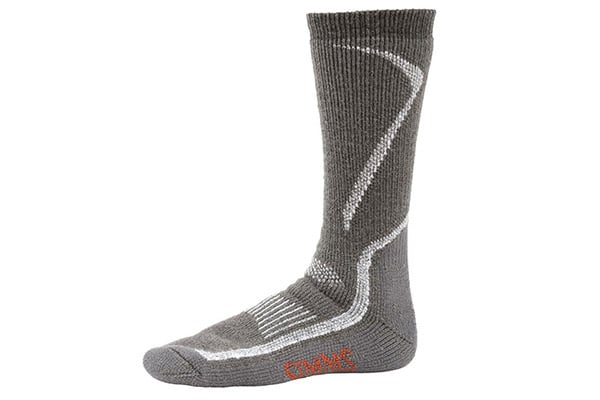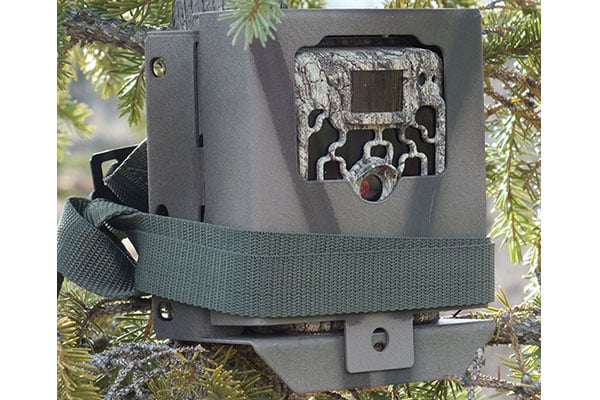Last Updated on
Socks may not be the most exciting gear, but they make a huge difference when it comes to your comfort and mobility in any outdoor activity. We all know the hunter or hiker who keeps wearing those worn out socks year after year (chances are it may be you), and they aren’t doing their feet or their adventures any favors by refusing to upgrade their socks. Even if you want to add some new outdoor socks to your dresser, it may be hard to know where to start aside from the standard “wool socks” web search. Instead of stretching those old socks through another season, let’s get smart about sock selection and find a few new pairs that are right for you.
What Quality Socks Should Do
There are really four important functions a quality sock should accomplish when you wear them. The first and many times the most important element is a moisture wicking capability. Everyone has experienced sweaty feet, especially on those strenuous treks or hikes, and when you combine significant moisture in your feet with colder temperatures or periods of inactivity (like sitting in the deer stand), you get cold feet that will eventually cause you to call it a day.
Next, socks should provide a level of padding that matches your chosen activity. If you’re planning on hiking several days on a backpacking trip, you want a decent level of padding to match. Not to be overlooked, the third element that a sock should offer is insulation. This one is the most obvious – socks should keep you warm – but you’ll want to balance the level of insulation with the ability to wick moisture away when you become more active in those thicker socks.
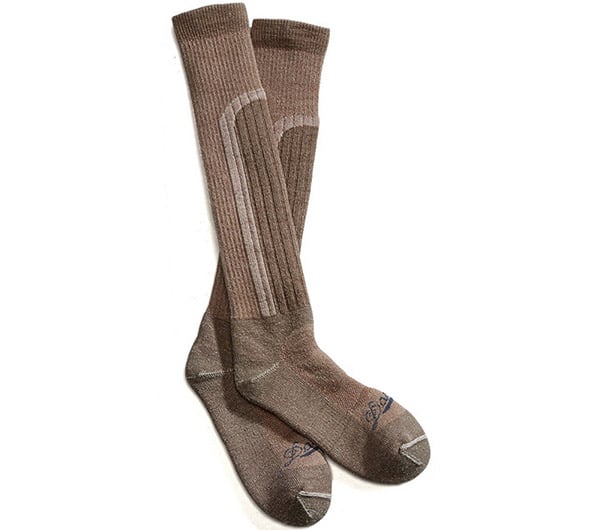
The final attribute to pay attention to is fit and sizing. While a sock should fit securely without a whole lot of gaps and bunches in the fit, you don’t want it to fit too tight either. An extremely tight sock will cut off circulation of some of the blood vessels in your feet, and the less blood that gets to your feet, the colder your feet will become. A sock that is slightly larger is the better bet over one that may be too tight, but don’t over do it. One other recommendation, while layering socks can be an effective method for those colder days, it can also restrict blood flow when the layering gets too tight. That’s why it’s better to start with a quality sock designed for your chosen purpose instead of several inferior pairs layered together.
Styles
Hiking Socks
Hiking socks are the most diversified style of outdoor socks available, and they can vary significantly depending on the intended purpose. Hiking socks generally come in lightweight, medium and heavy styles. Lightweight hiking socks are intended for warmer, less strenuous hikes where you won’t need as much insulation or padding as other hikes. This lightweight variety is usually cut lower, and they are easy to distinguish from other hiking socks since they will be thinner, especially at the top. Moisture wicking is an important aspect to look for in lightweight hiking socks since you’ll be moving around a lot in warmer temperatures and generating a good deal of sweat in the process.
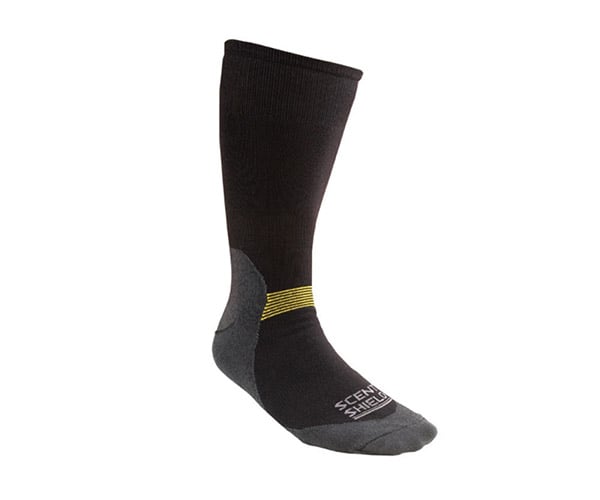
Medium or backpacking socks increase the padding of the sock, especially in the lower portion of the sock including both the sole and the top of the foot area. This added padding helps with the shock involved in longer hikes where you may be climbing over small boulders, fallen trees and other obstructions in the path. Insulation is increased in medium socks as well, but not as much as you’ll find in the heavy variety of hiking socks. Moisture wicking is important here as it is in any outdoor sock.
The heavy or mountaineering variety of hiking socks are made especially for those who spend an extended period of time in higher elevations or colder conditions. Insulation and padding is significantly increased in this variety (without completely sacrificing mobility). Heavy mountaineering socks won’t be suitable for smaller trips or short hikes in casual hiking or athletic shoes, but they are usually the best option for substantial hikes or cold hunts.
Hunting Socks
Frankly you’ll find more brands marketed as hiking socks than hunting socks, but if you know what to look for, you can make certain styles of hiking socks work as your hunting socks as well. Hunting socks are similar to either the medium or heavy variety of hiking socks, and you should choose the appropriate one for you depending on your environment. If there is only a slight chill in the air when you hunt, consider the medium backpacking socks over the heavier variety. However if you’re expecting sub-zero temps in the stand each year, go ahead and opt for the heavier mountaineering variety of socks. Many brands are marketed as hunting socks to help you differentiate, but the concept is essentially the same. Pay attention to padding and thickness and tailor it to your chosen hunting scenario.
Sock Liners
Sock liners are an important addition to anyone’s hiking or hunting sock collection, and they serve a vital function that other styles of socks cannot. Liners are designed to be worn under your primary pair of hunting or hiking socks, and they are made of special materials that encourage moisture wicking. As you wear them close to the skin on your feet, they draw moisture away from your feet and out towards the warmer, heavier sock layer on top. On longer days, you can swap out the sock liners with another pair in your pack and then put back on the heavier layer to keep your feet dry. It’s also easier to pack several sock liners in a backpack short on space.
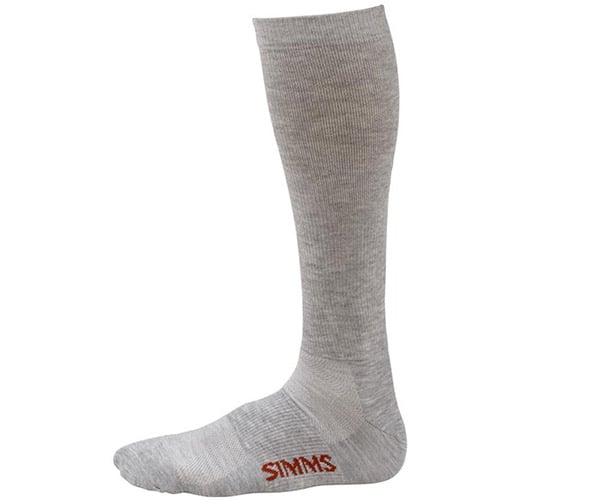
Neoprene Socks / Wading Socks
If you’re around the water during activities like fly fishing, rafting, paddling, etc., you need a sock that provides insulation even when wet. Neoprene socks allow you to get your feet wet and still receive some insulation from your socks, but note that if you have a good pair of waders, you won’t necessarily need neoprene socks if the seal on your waders is good (as it should be). Neoprene is measured in thickness by millimeters, and the thicker the neoprene, the more insulation that you’ll receive. However, very thick neoprene socks can feel bulky, and you’ll need to balance thickness with flexibility.
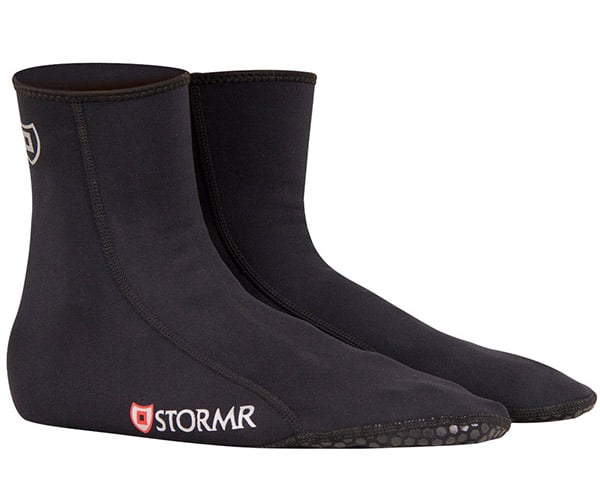
A Word On Merino Wool
Wool is the most popular material in outdoor socks, and anyone who encounters colder temperatures should consider it a must-have. Classic wool socks were rough and sometimes itchy, but they were relied on heavily because they still retained some insulation properties even when they were wet. Today Merino wool is the popular material found in most wool socks, and if you’re still using the classic wool variety in your hunting or hiking exploits, you should consider upgrading to Merino.
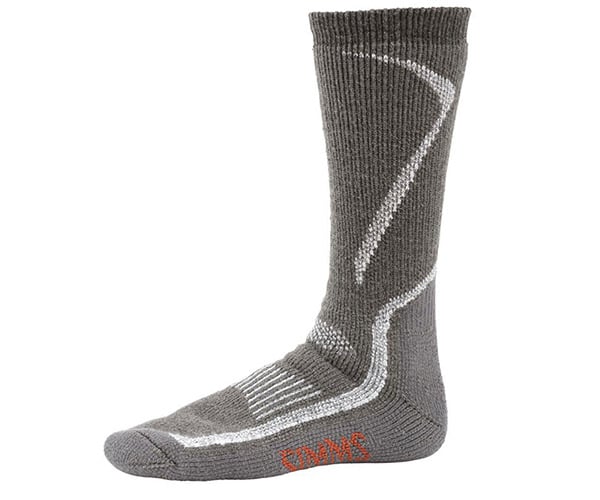
Merino wool naturally encourages moisture wicking, and it has some water repelling properties that give the feeling of dryness even after a period of significant activity. Merino wool also has antibacterial properties making it the best choice for hunters concerned about scent or backpackers who may have to wear their socks more than one day in a row. Finally, Merino is the warmest variety of wool available today, and it doesn’t have the abrasive properties of the classic varieties. Simply put, Merino is worth the investment if you’re serious about your socks. Look for high concentrations of Merino as it is usually blended with other synthetic materials.
Coolmax Technology
In contrast to Merino Wool, Coolmax fabric is among the fastest drying sock materials available. Coolmax socks aren’t a good choice for colder temperatures, but for scenarios when you’re very active, Coolmax usually is the best option. Coolmax technology is essentially a trumped-up moisture wicking fabric that performs better than Merino as far as moisture control is concerned. Many times liner socks will be made with Coolmax fabric as well.
